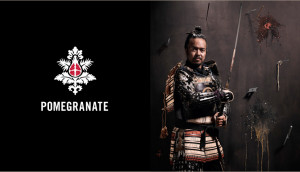Your New Year’s Resolutions may already be broken but here are really great tips to keep your logo designing on track in 2014. Build these steps into your design process and they’ll help you to understand what your client is looking for and guide you to achieving it.
1. Make your design appropriate to your client’s business
This should be a no brainer but it still bears emphasising. Your client will have an expectation based on the industry he’s in—an IT company isn’t going to want a logo with flowers and a garden designer won’t be looking for a high-tech graphic. A company’s logo tells their potential clients who they are, so don’t misrepresent them.
2. Research your client’s company
Take a good look at the business you’re working for. Do they have an illustrious history that can be referenced in the logo? Perhaps an earlier standout logo that can be updated? What markets are they in? How do customers respond to them and how would the company like customers to respond? All of this is relevant and can inform your logo design.
3. Make more than one sketch
Grab a pencil, a piece of paper and let your mind flow. This is the quickest way to get multiple ideas down and then to let them evolve in different directions. They don’t need to be perfect – just rough ideas. Brainstorm a variety of options, leave them for a few days or at least overnight, and then go back to them and see which ones stand out.
4. Explore your client’s market
Take a look at the logos of the competition, the market leaders and the companies trailing behind. What do they have in common and which ones work best? You’re not looking to design a logo that’s the same—you need to assess the best and come up with something even better!
5. You might design it, but the logo belongs to your client
Remember, you’re not designing the logo you’d want, you’re designing the logo your client wants. So discuss what styles of logo they like and admire, whether they already have specific corporate colours or fonts. If you hate what they’re asking for, explain why you think it would be wrong and then come up with something more appropriate that will still tick their boxes.
6. Do your first design in black
This will allow you to assess the impact of your design. And remember, there will be times when every logo, no matter how colourful, will need to be rendered in black. It has to work both ways and the easiest way to achieve this is to start with black and add colour later.
7. You don’t need to be too obvious
A butcher’s logo needn’t feature a cleaver or a string of sausages, a music shop logo doesn’t have to incorporate musical notes. A logo shouldn’t be a graphic cliché.
8. Pick your typeface with care
A font says more than just the words typed in it. Sans serif looks modern and clean, a traditional font like Times New Roman speaks of heritage and respectability, a cursive script may be difficult to read when reduced in size, while novelty fonts may look childish. Choose carefully and experiment before making a final decision.
9. Simplicity is key
A simple logo will stand out more and will be easier to remember.
10. Don’t be a slave to fashion
The latest trend in logos might look great now—but think how it will look in five years from now. Try to come up with something totally original. Then it won’t run the risk of looking dated in a short space of time.
11. Don’t promise more than you can deliver
Promise the design tomorrow and deliver two days later and your client will be disappointed. Promise the design next week and deliver in two days and your client will be delighted.
12. A logotype might be right
They say every picture tells a story, but every logo doesn’t need to be a picture! Sometimes a wordmark will suffice to make a bold and memorable statement.
13. Understand colour psychology
Red is aggressive but warm, blue is professional, yellow works well for food, green for the environment… Choose your colours to give additional layers of meaning.
14. Manage your clients’ expectations
The best way to do this is via communication—throughout the whole design process. Ask them what they want, listen to their answers, discuss your ideas and take on board their concerns. If you know what they want, you’re more likely to achieve it and they’re more likely to go away happy.
(c) Alchemist Logo Design – Leading Design specialists in London





